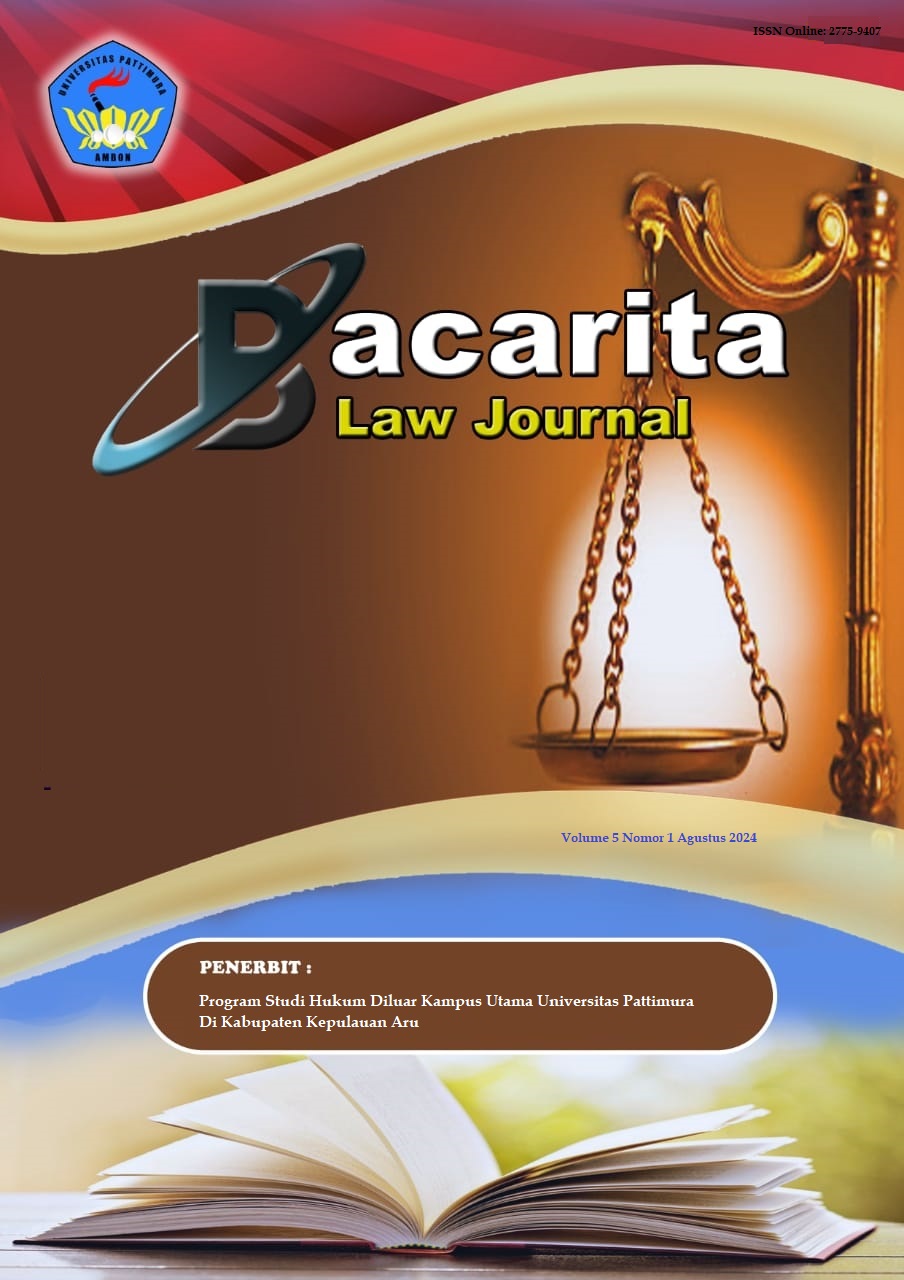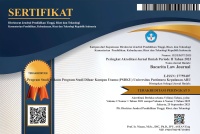Penegakan Hukum Korban Bullying di Berbagai Tingkat Sekolah di Indonesia
Abstract
The purpose of this study is to determine (1) the forms of bullying behavior (2) the factors causing the emergence of bullying behavior (3) the impact of bullying behavior (4) Efforts to handle bullying behavior using WDEP technique reality counseling. This study uses an approach with a clinical case study method. The results showed that 1) The forms of bullying carried out by NM were verbal bullying such as calling, calling by nicknames, and calling with parents' names, and physical bullying such as nudging and pinching. The intensity of NM bullying is 5-6 times a day which is done in the classroom and in the school canteen. Characteristics of victims of bullying NM are female 2) The factors that cause NM to do bullying are from parents, NM's personal self, and NM's association with naughty school friends, and supervision from the school on student activities that is still lacking. 3) The impact of bullying behavior by NM causes his learning achievement to decline and is shunned by his friends. 4) The handling effort is done by using WDEP technique counseling. The results of the treatment showed a decrease in bullying behavior. These changes occur because of a change in awareness within the counselee that focuses on current events or current conditions, on personal strengths or what the counselee wants, and encourages individuals to develop better behavior so that it can be useful for the future for the subject and for society. as well as country.
Downloads
References
Jurnal
Elsya Derma Putri, “Kasus Bullying Di Lingkungan Sekolah : Dampak Serta Penanganannya,” Keguruan: Jurnal Penelitian, Pemikiran Dan Pengabdian 10 (2022): 24–30.
Ni Putu and Sayuri Dewi, “Perlindungan Hukum Terhadap Anak Korban Bullying Yang Terjadi Di Lingkungan Sekolah,” Jurnal Kertha Desa 10, no. 8 (2022): 745–54.
Nur Dafiq Dafiq et al., “Upaya Edukasi Pencegahan Bullying Pada Siswa Sekolah Menengah Atas Di Kabupaten Manggarai Ntt,” Randang Tana - Jurnal Pengabdian Masyarakat 3, no. 3 (2020): 120–29, https://doi.org/10.36928/jrt.v3i3.610.
Nunuk Sulisrudatin, “Kasus Bullying Dalam Kalangan Pelajar (Suatu Tinjauan Kriminologi),” Jurnal Ilmiah Hukum Dirgantara 5, no. 2 (2014): 57–70, https://doi.org/10.35968/jh.v5i2.109.
Penindasan Atau, Bullying Disekolah, and Cevonie M Ngantung, “Lex Crimen Vol. X/No. 3/Apr/2021” X, no. 3 (2021): 236–46.
Resti Amelia, “Perlindungan Hukum Terhadap Pelaku Dan Korban Bullying Di Indonesia” 1, no. 1 (2020): 31.
Susmita Tri Febritanti, “Perilaku Bullying Pada Remaja,” Jurnal Pengabdian Dinamika 10, no. 1 (2023): 21, https://doi.org/10.62870/dinamika.v10i1.21808.
Sugiyono, “Penelitian Ini Dilakukan Untuk Mengetahui Perilaku” 4, no. 11 (2015): 3882–3908.
Siti Nur Elisa Lusiana Lusiana and Siful Arifin, “Dampak Bullying Terhadap Kepribadian Dan Pendidikan Seorang Anak,” Kariman: Jurnal Pendidikan Keislaman 10, no. 2 (2022): 337–50, https://doi.org/10.52185/kariman.v10i2.252.
Skripsi, Tesis, Distertasi, Online/World Wide Web dan Lain-Lain
Lusiana and Siful Arifin, “Dampak Bullying Terhadap Kepribadian Dan Pendidikan Seorang Anak.”
Putri, “Kasus Bullying Di Lingkungan Sekolah : Dampak Serta Penanganannya.”
Putu and Dewi, “Perlindungan Hukum Terhadap Anak Korban Bullying Yang Terjadi Di Lingkungan Sekolah.”
Sulisrudatin, “Kasus Bullying Dalam Kalangan Pelajar (Suatu Tinjauan Kriminologi).”
Copyright (c) 2024 Vivih Oktaviani, Dianah Dianah, Hasanudin Subakhti, Akhmad Khalimy.

This work is licensed under a Creative Commons Attribution-NonCommercial 4.0 International License.
Authors who publish their manuscripts in this Journal agree to the following conditions:
- The copyright in each article belongs to the author, as well as the right to patent.
- Authors are able to enter into separate, additional contractual arrangements for the non-exclusive distribution of the journal's published version of the work (e.g., post it to an institutional repository or publish it in a book), with an acknowledgment of its initial publication in this journal.
- Authors are permitted and encouraged to post their work online (e.g., in institutional repositories or on their website) prior to and during the submission process, as it can lead to productive exchanges, as well as earlier and greater citation of published work.
- Authors have the right to self-archiving of the article (Author Self-Archiving Policy)















